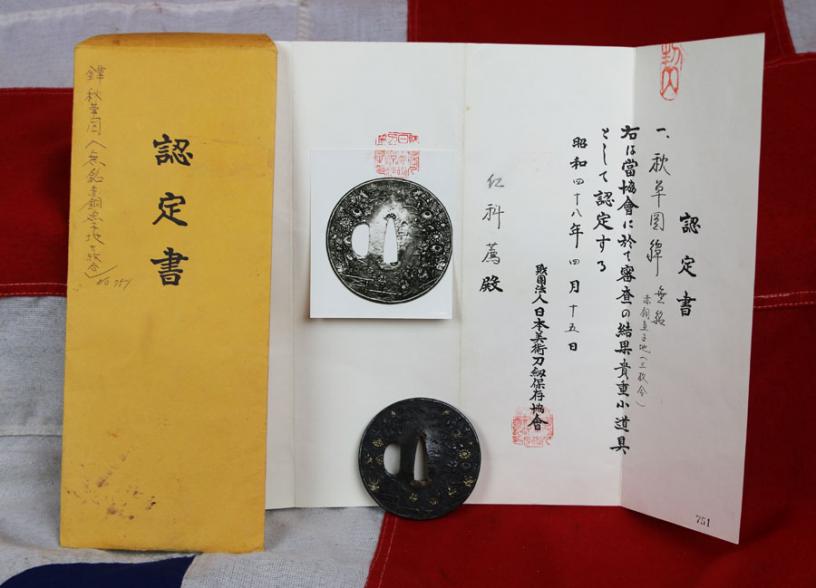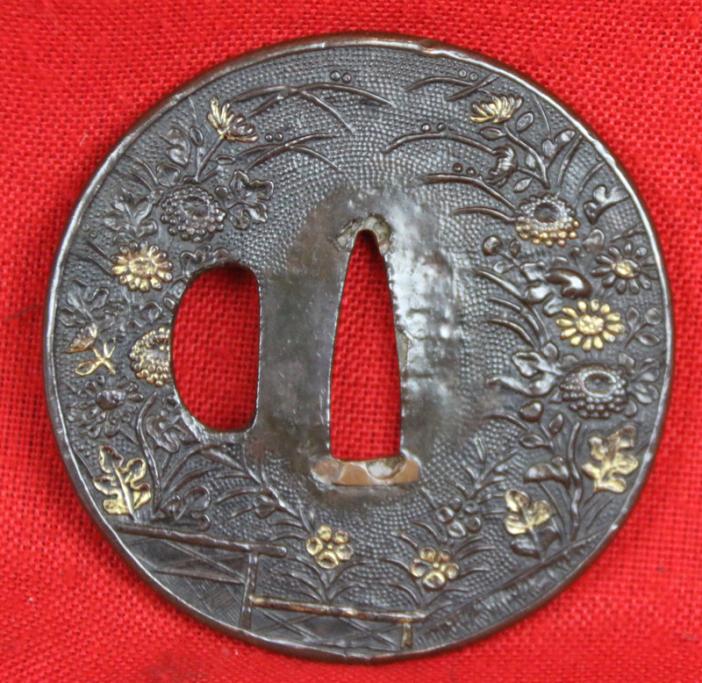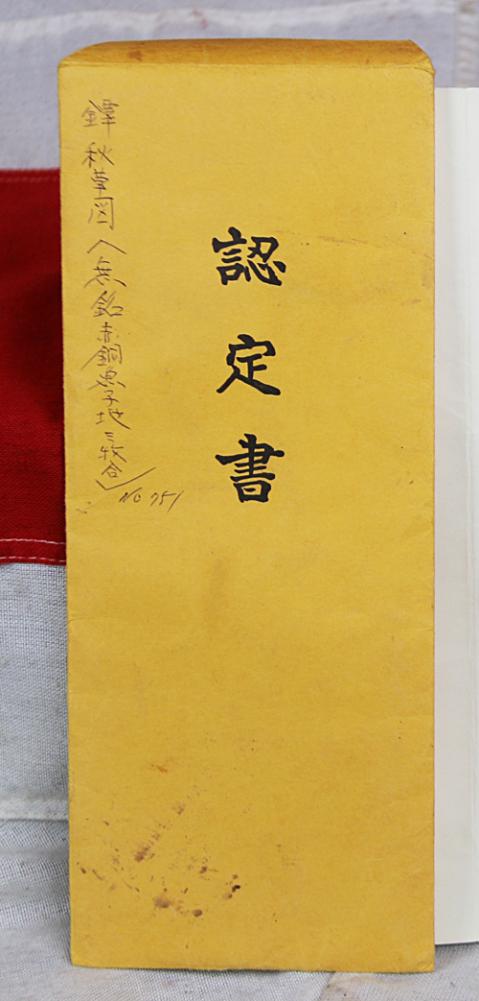A Beautiful Late Edo Bakumatsu Copper Katana Tsuba With NBTHK Papers.
Bakumatsu copper tsuba, NBTHK Kicho Kodugu papers from 2020. With a translation, the "ninteisho" is introducing the document as recognition written in calligraphy. The tsuba is decorated with Aki kusa, Autumn grass [flowers], unsigned. The Nihon Bijutsu Tōken Hozon Kyōkai is a public interest incorporated foundation established in February 1948 to preserve and promote Japanese swords that have artistic value. Tsuba are usually finely decorated, and are highly desirable collectors' items in their own right. Tsuba were made by whole dynasties of craftsmen whose only craft was making tsuba. They were usually lavishly decorated. In addition to being collectors items, they were often used as heirlooms, passed from one generation to the next. Japanese families with samurai roots sometimes have their family crest (mon) crafted onto a tsuba. Tsuba can be found in a variety of metals and alloys, including iron, steel, brass, copper and shakudo. In a duel, two participants may lock their katana together at the point of the tsuba and push, trying to gain a better position from which to strike the other down. This is known as tsubazeriai pushing tsuba against each other. The tsuba has north and south kuchi-beni.
Literally "lipstick", but refers to the copper plugs of the nakago-ana. Their function is to secure the tsuba firmly when mounted on a blade. These plugs are sometimes called sekigane.
Code: 23510
695.00 GBP




